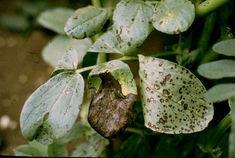
Bean growers are being advised by BASF to keep a close eye on the weather conditions for ‘chocolate spot’ disease at present. The company is recommending use of a strong protectant such as Signum in both winter and spring field beans.
“Fungicide treatments for chocolate spot are protectant in their activity and so it is important to keep a close eye on signs of the disease and be prepared to act quickly,” warned says John Young, BASF’s peas and Beans product manager.
“The scatter of small lesions currently being seen on lower leaves can easily become a problem, particularly in crops with dense plant populations and when conditions are conducive to disease spread.”
Young added that Signum, which contains pyraclostrobin and boscalid, has been a significant breakthrough in the protection against the two major diseases in beans: chocolate spot and rust.
In a series of field trials, Signum reportedly gave 74 percent control of chocolate spot, outperforming other treatments. Its high performance was reflected in yields. In a TAG trial, Signum treatments were said to yield 3.58 t/ha compared with 2.75 t/ha for the untreated. Another trial showed Signum yielding 3.74 t/ha, with the untreated yielding 2.76 t/ha.
BASF recommends that in accordance with resistance management guidelines, Signum should be alternated with fungicides from a different cross-resistance group such as the triazoles.
“A programme that starts with Signum at T1 and followed by Caramba at T2 would be a sound approach if the threat from rust increases later in the season,” Young advised.
”With its broad-spectrum disease control and its wide crop recommendations, including spring and winter beans, Brussels sprouts, cabbage, cauliflower, carrots, lettuce, strawberries, Signum will be a useful chemical to keep in the farm chemical store.”



